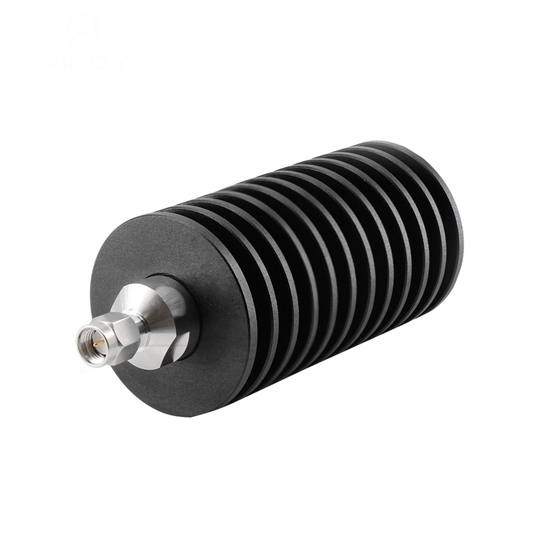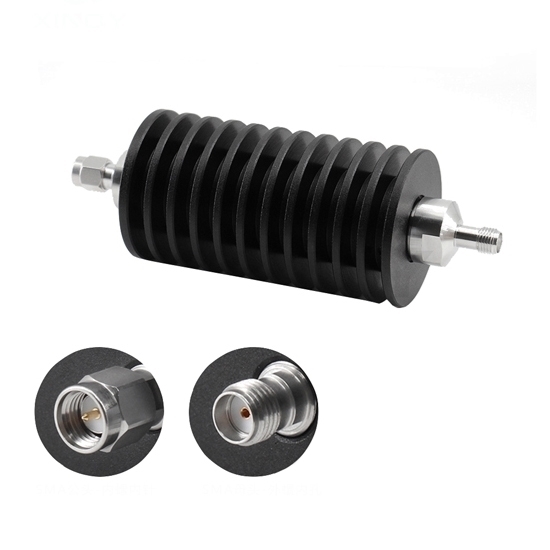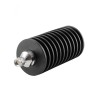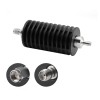



- Stock: In Stock
- Model: RDDLZ-RFFA-10DB50W
- Weight: 1.00
- SKU: RDDLZ-RFFA-10DB50W
Available Options
10dB 50 watt coaxial attenuators utilize microstrip technology to maintain signal integrity while minimizing losses across a specified frequency range, crucial for precision devices like GPS systems. These fixed attenuators serve as indispensable tools in RF communication, ensuring signal compatibility and preventing overload damage in sensitive electronic systems while maintaining seamless functionality within complex microwave networks.
Specification
- Model: RDDLZ-SMAJKP-04-50W-10dB
- Frequency Range (Optional): DC~4GHz
- Standing Wave Ratio (VSWR): 1.20:1 (Max)
- Attenuation Value: 10dB
- Impedance: 50 Ohm
- Average Input Power: 50W@25℃
- Pick Power: 1kW (5μsce Pulse Width, 2% Duty Cycle)
- A connector Type: SMA-Male
- B connector type: SMA-Female
- Directionality: SMA Male Input, SMA Female Output
- Temperature Coefficient: <0.0004dB/℃
- Working Temperature: -55℃~+100℃
- Inner Conductor Material: Beryllium Bronze with Gold Plating
- Outer Conductor Material: Brass Plated with Ternary Alloy
- Heat Sink: Aluminum Alloy Black
- Insulator: PTFE
Dimension (Unit: mm)
Tips: How does an RF attenuator work?
An RF attenuator is a device designed to reduce the power level of a radio frequency (RF) signal without significantly distorting its waveform. It typically consists of resistive elements that dissipate energy as heat. The attenuator is inserted into the RF signal path, and its resistors absorb a portion of the signal power, thereby attenuating or reducing the signal strength. Attenuators come in various designs, including fixed, variable, and step attenuators, offering different levels of attenuation. Fixed attenuators have a predetermined reduction ratio, while variable attenuators allow adjustable attenuation levels. Step attenuators provide discrete steps of attenuation. By controlling the impedance and resistance values, RF attenuators effectively manage signal strength in applications such as communication systems, test setups, and signal conditioning, ensuring optimal performance without signal distortion.
